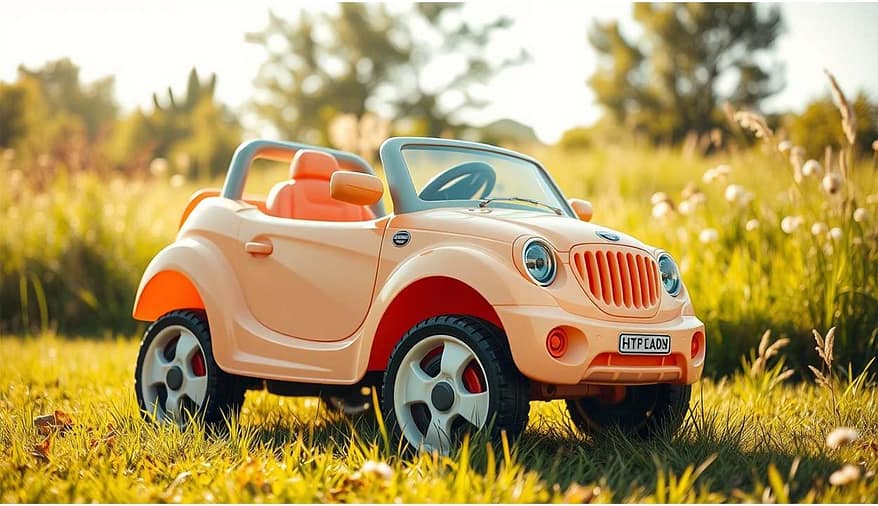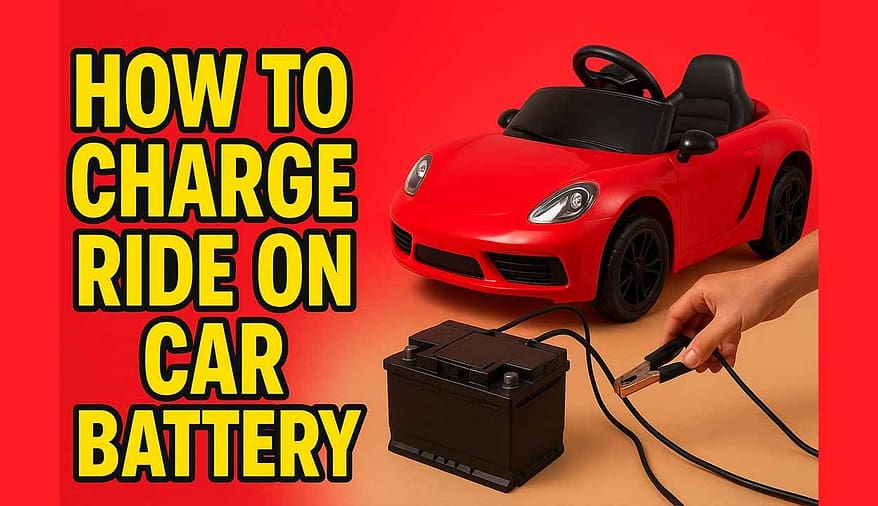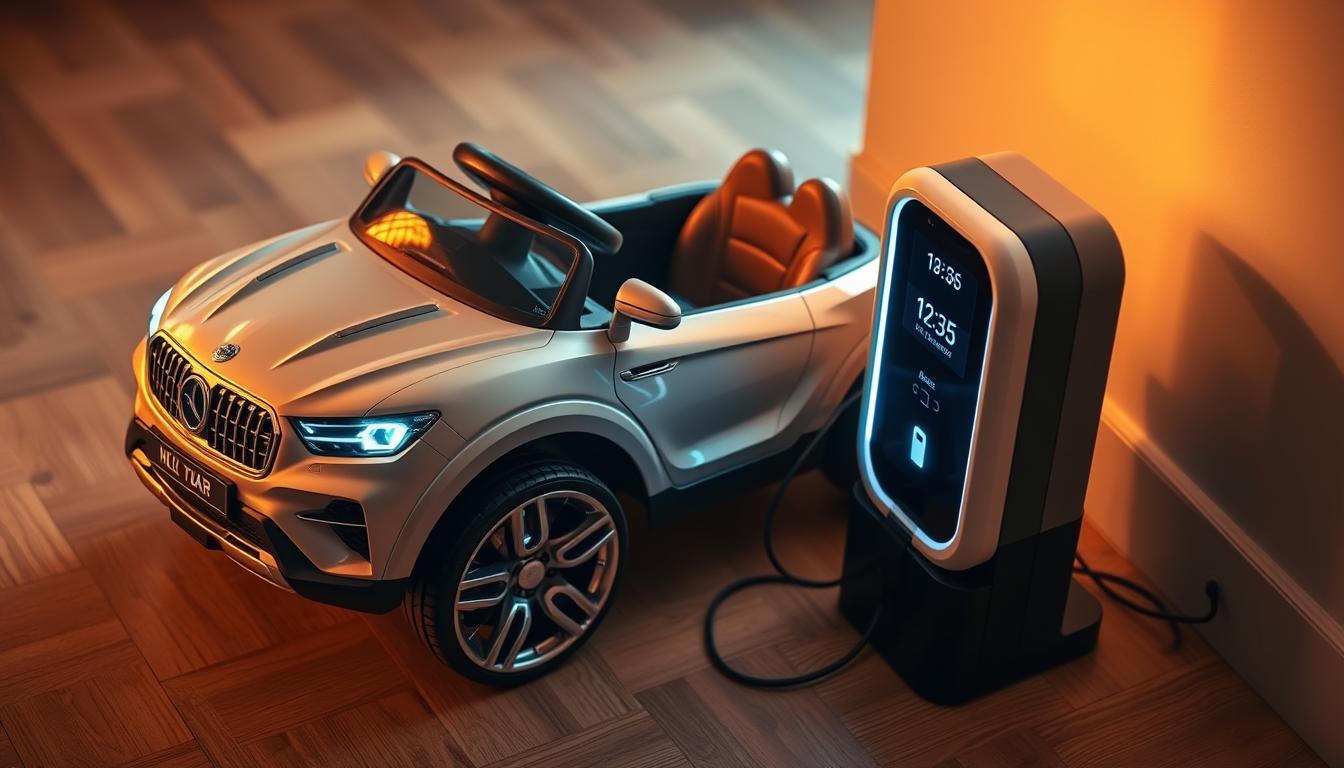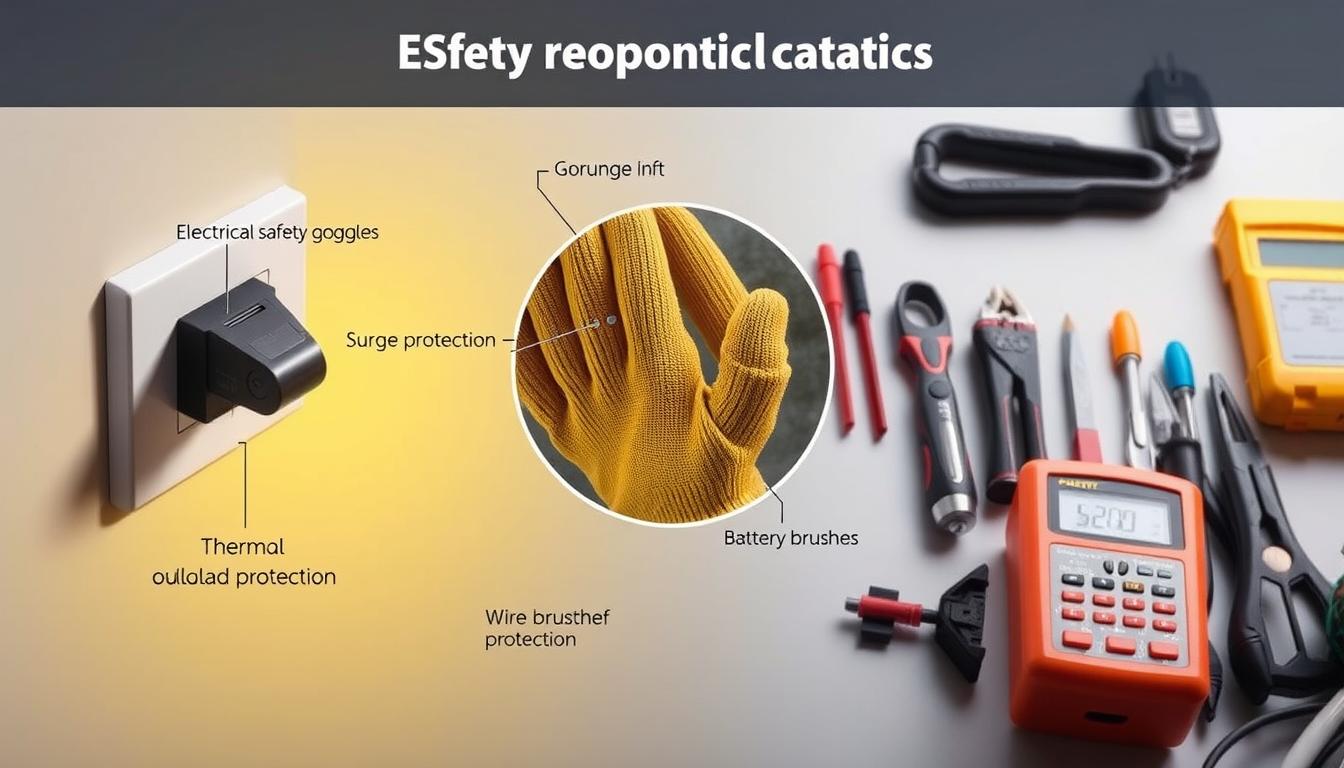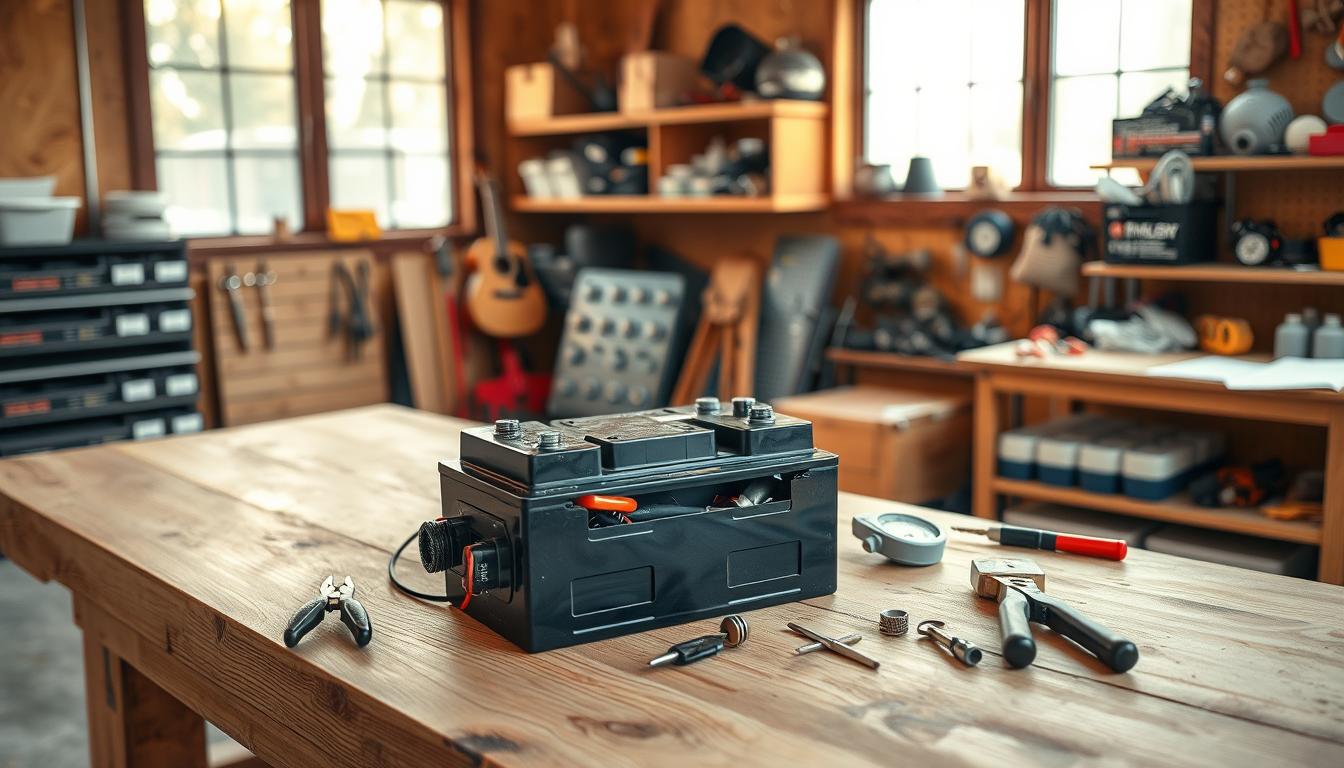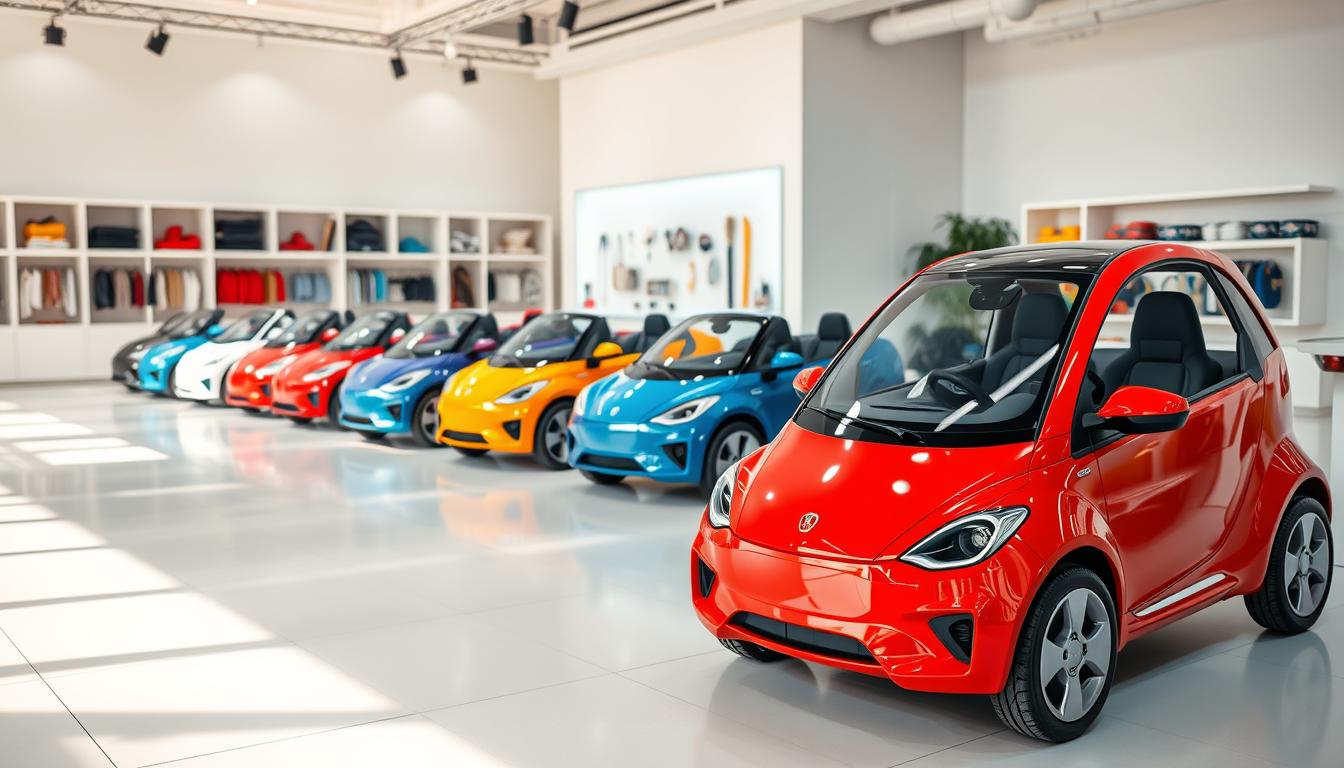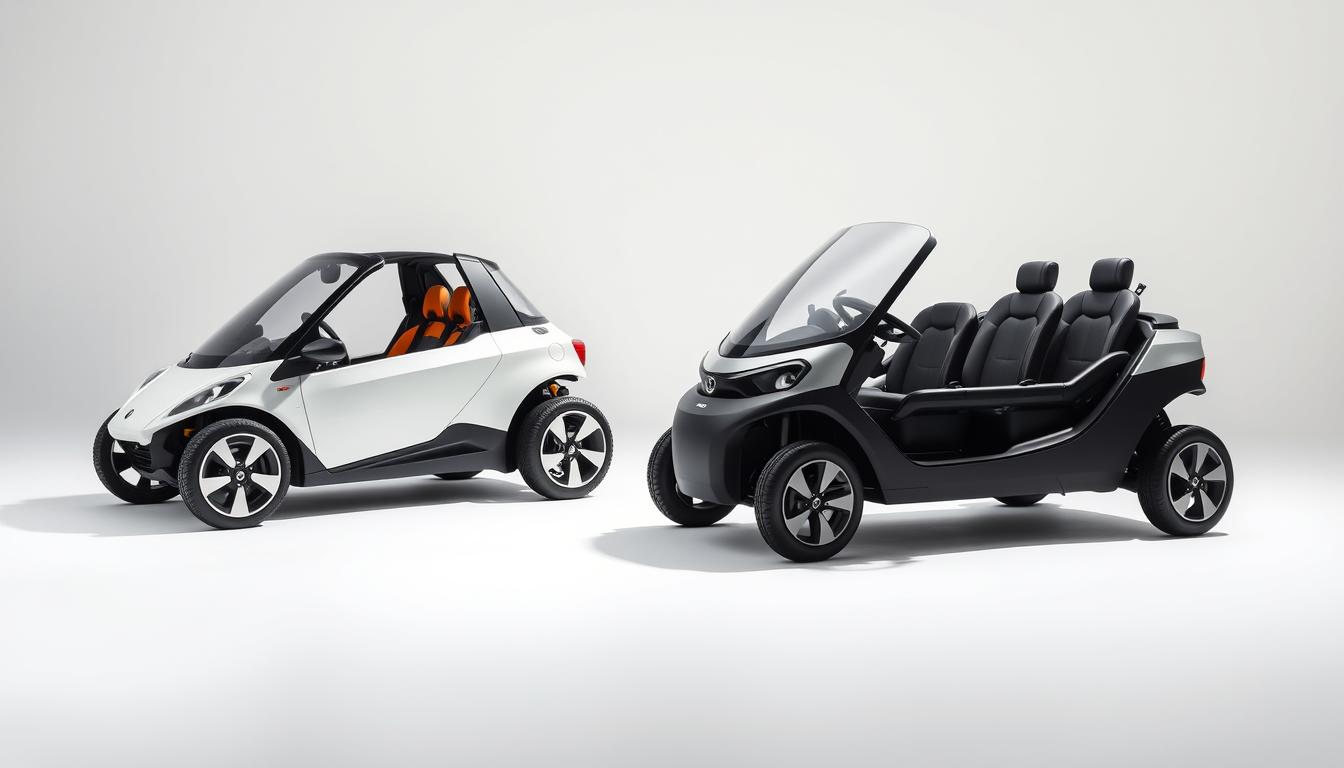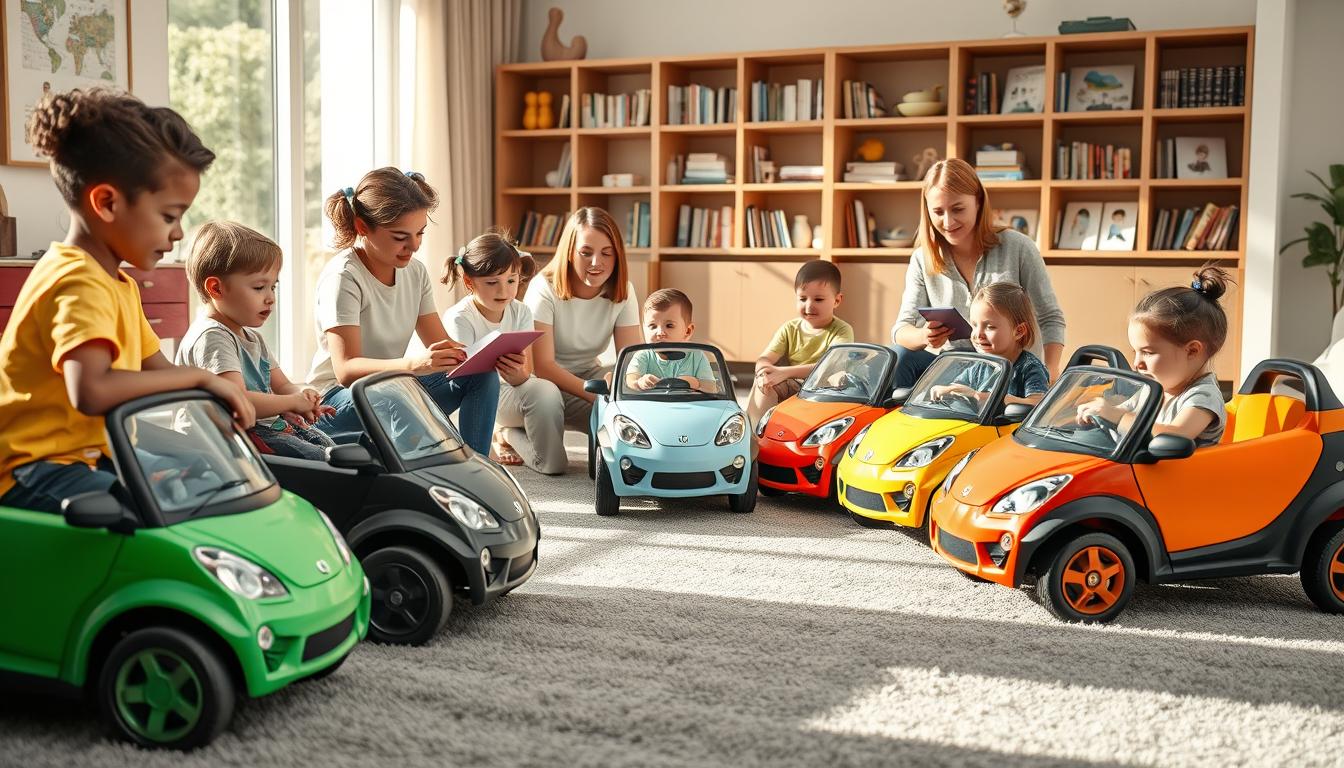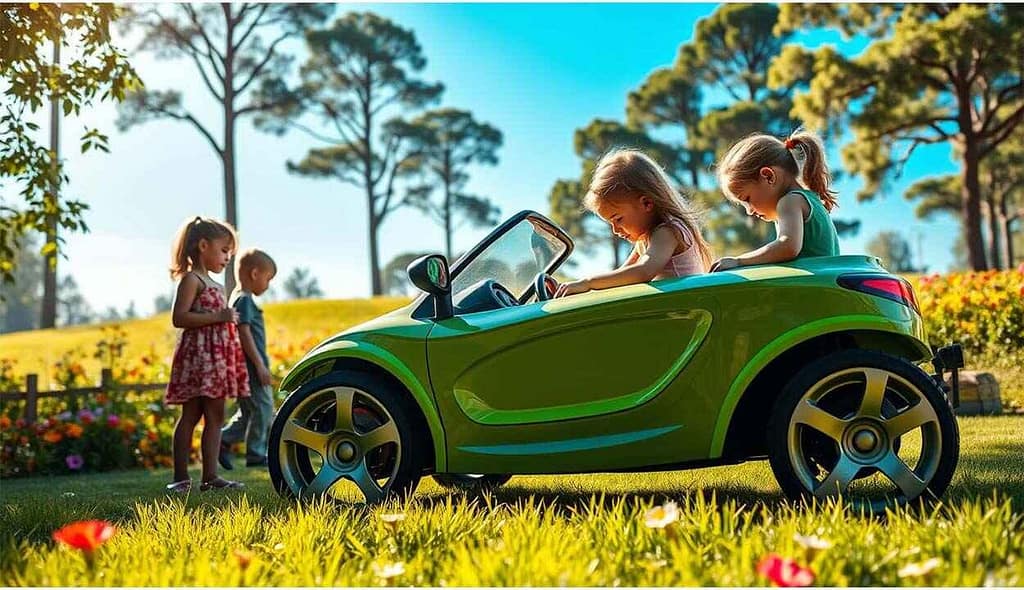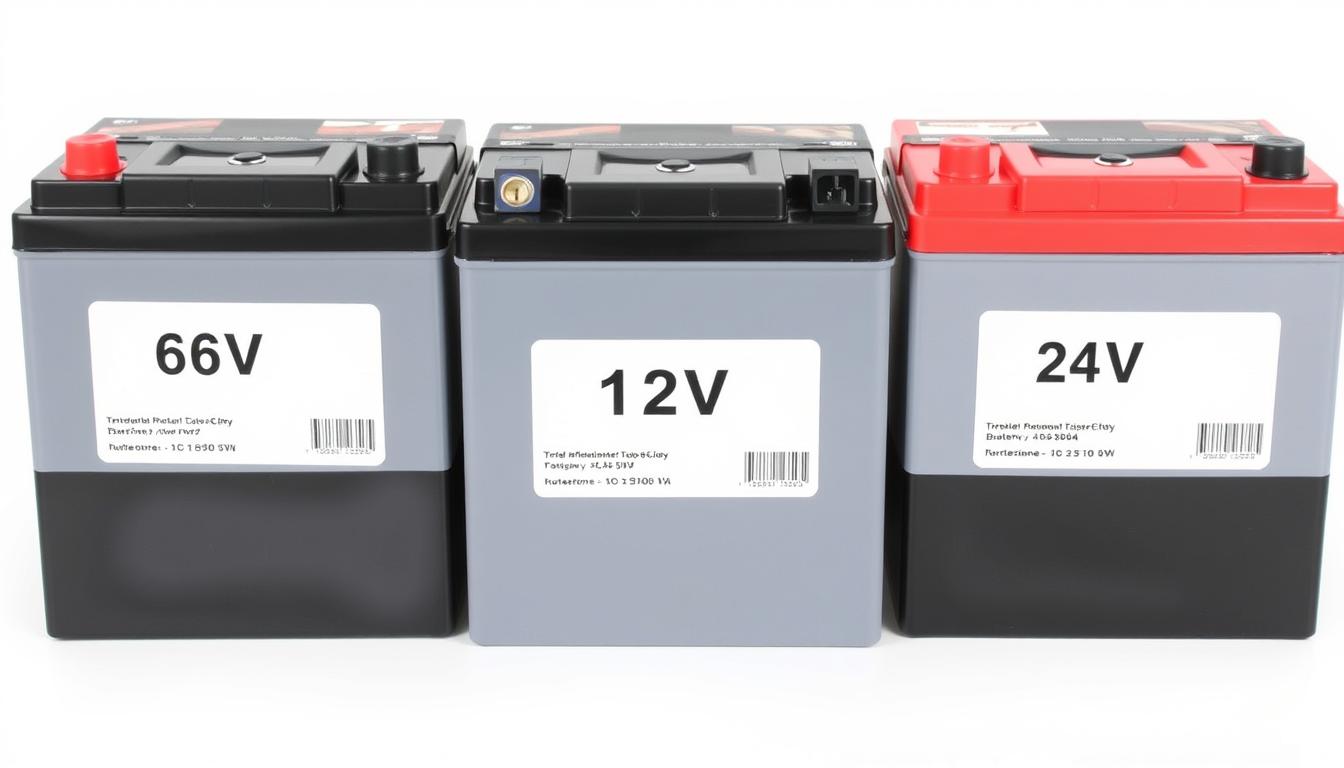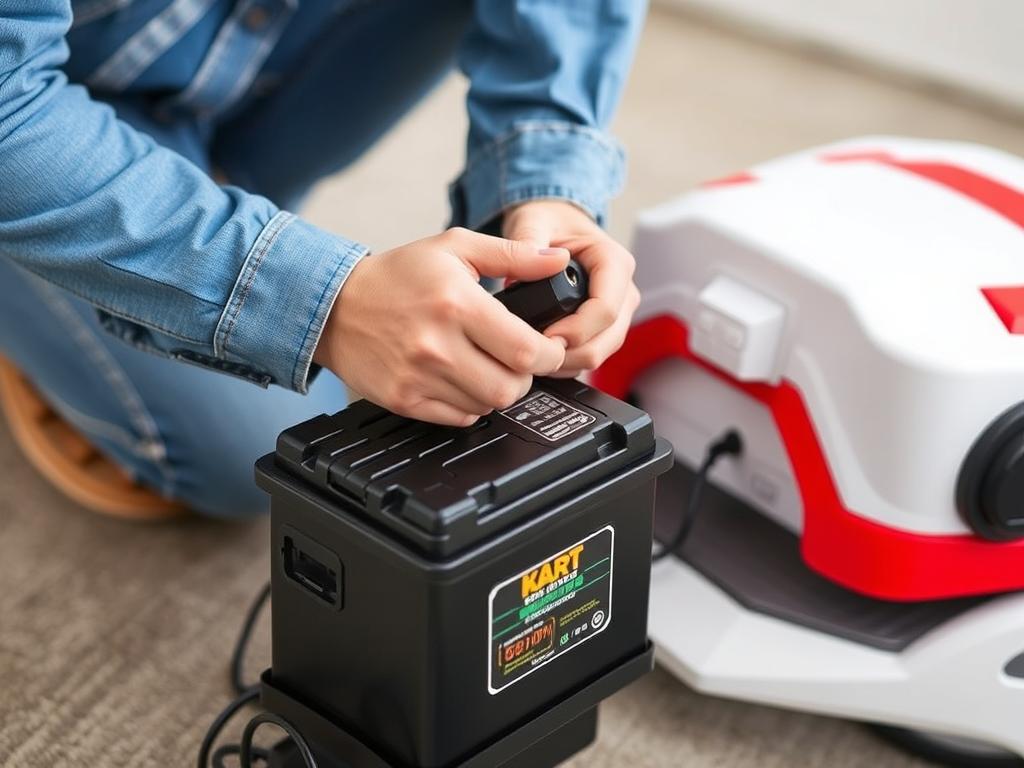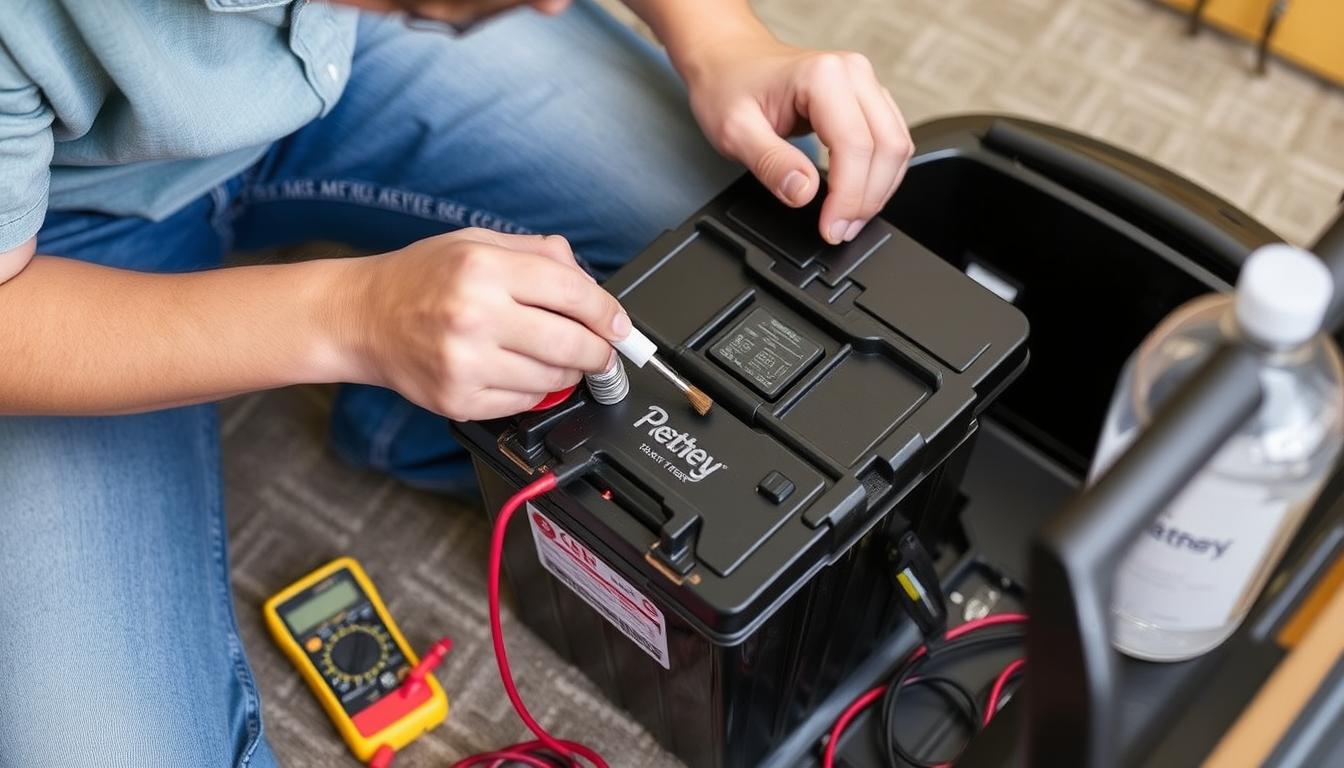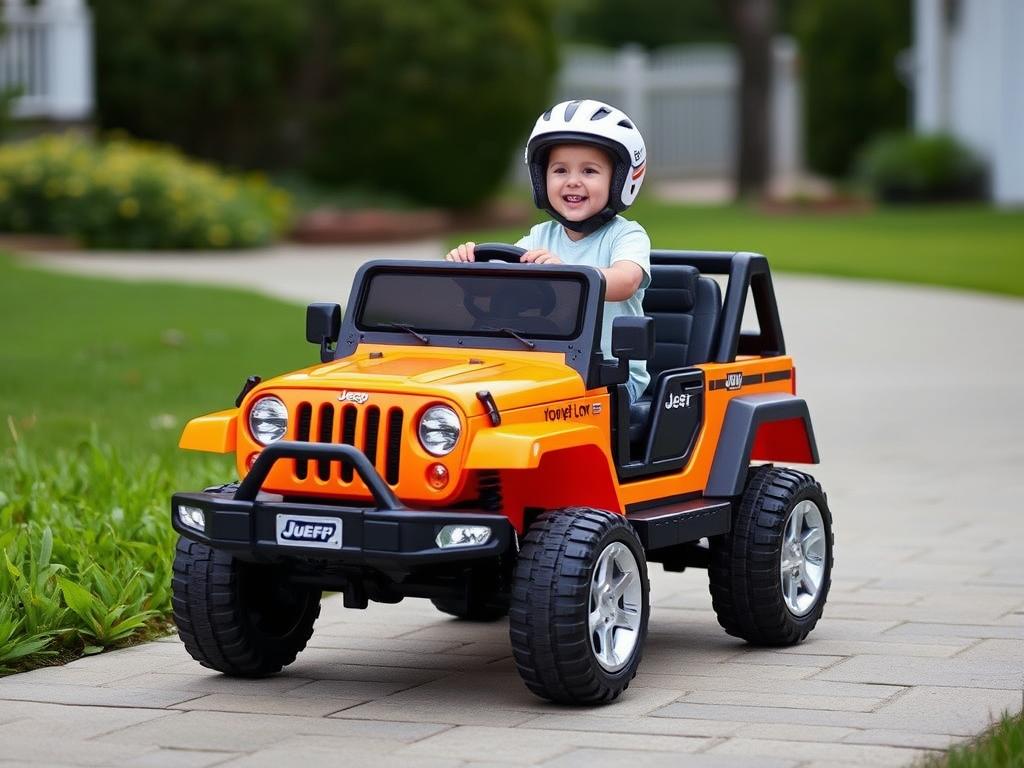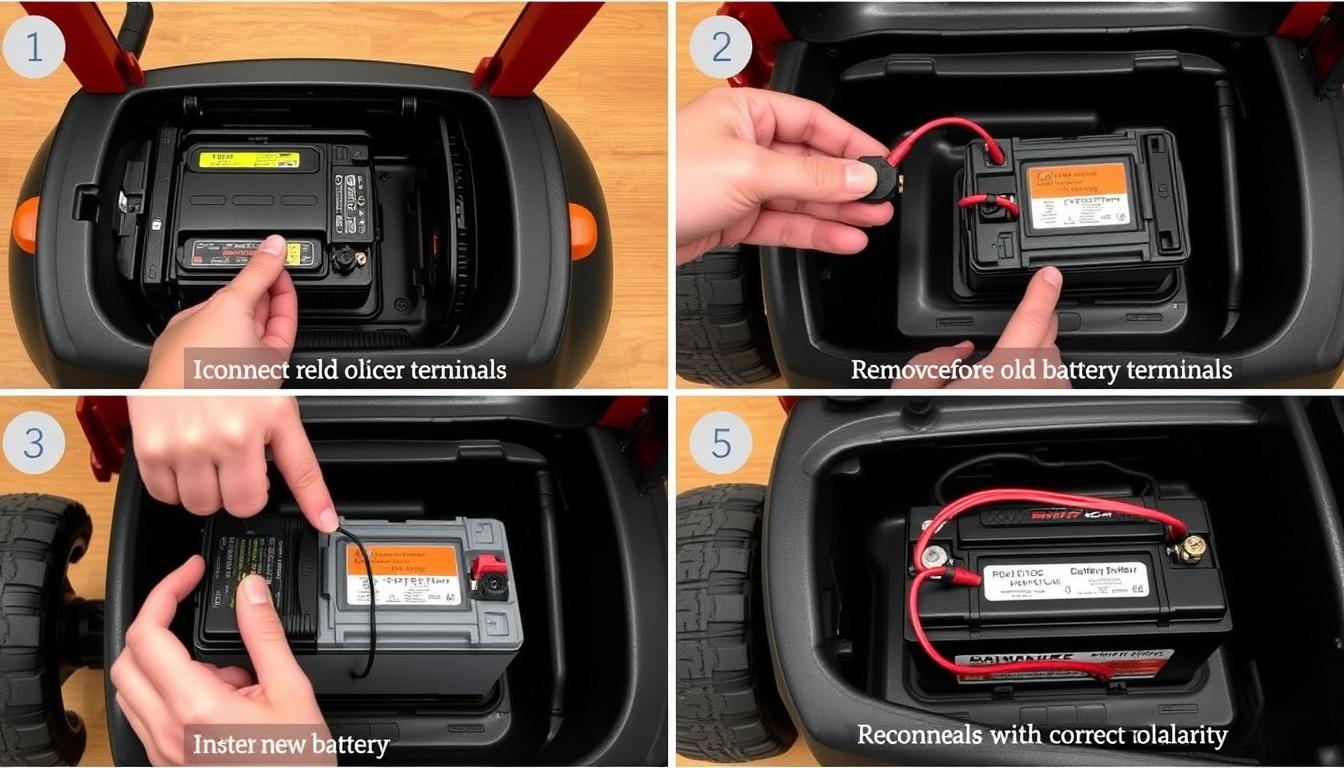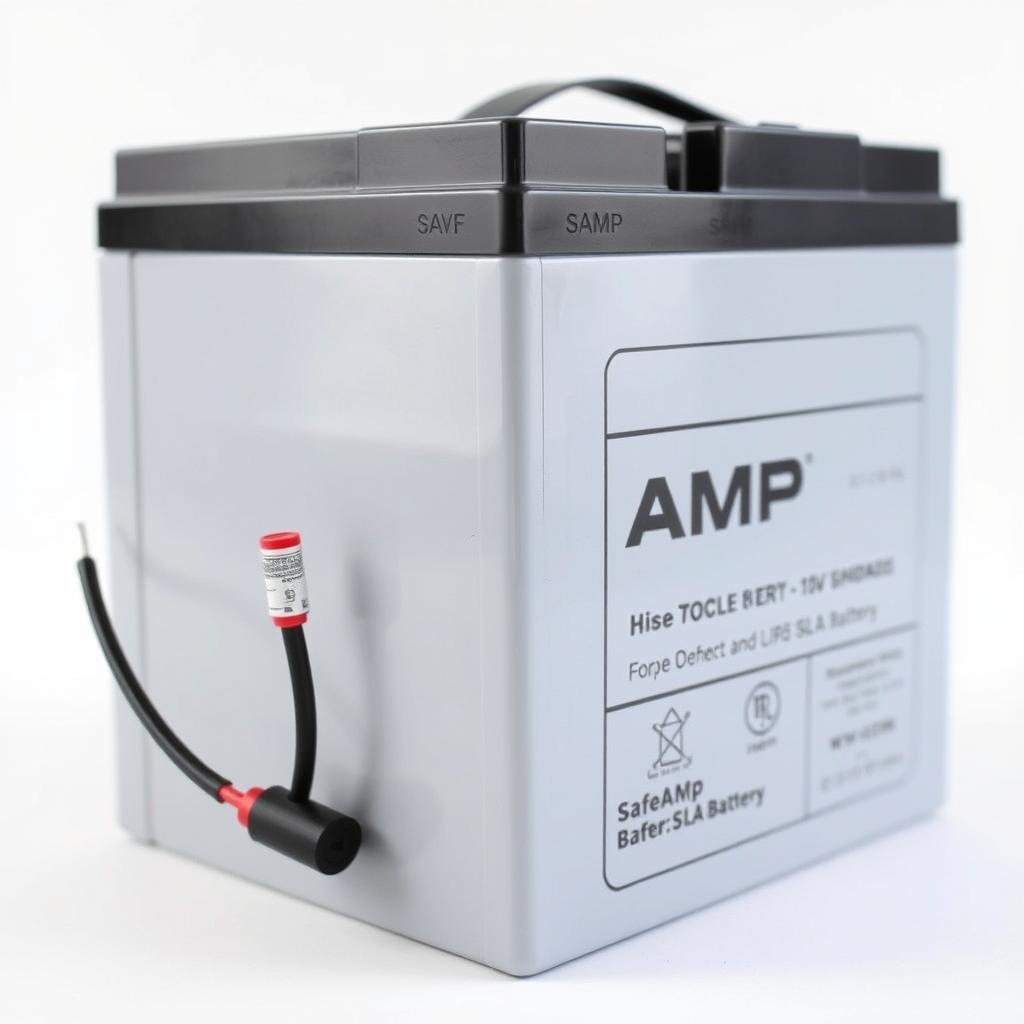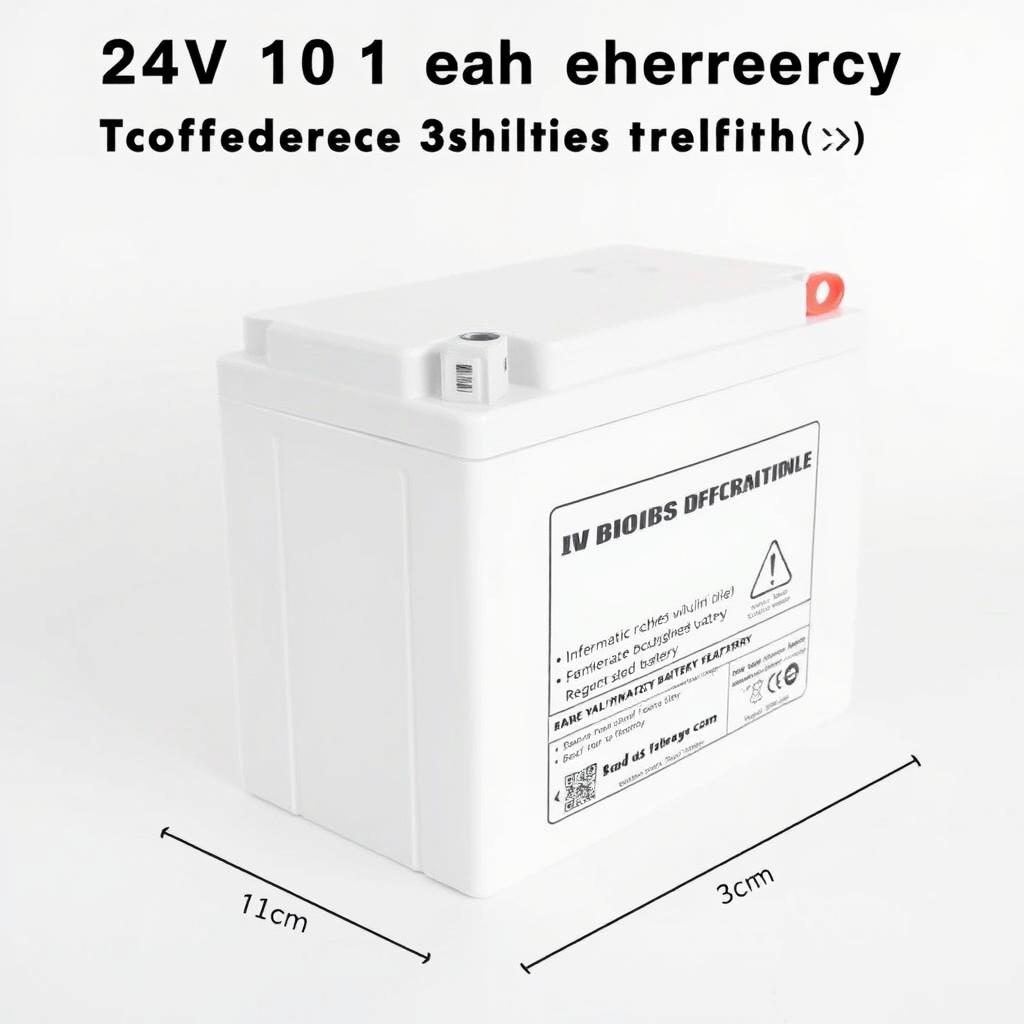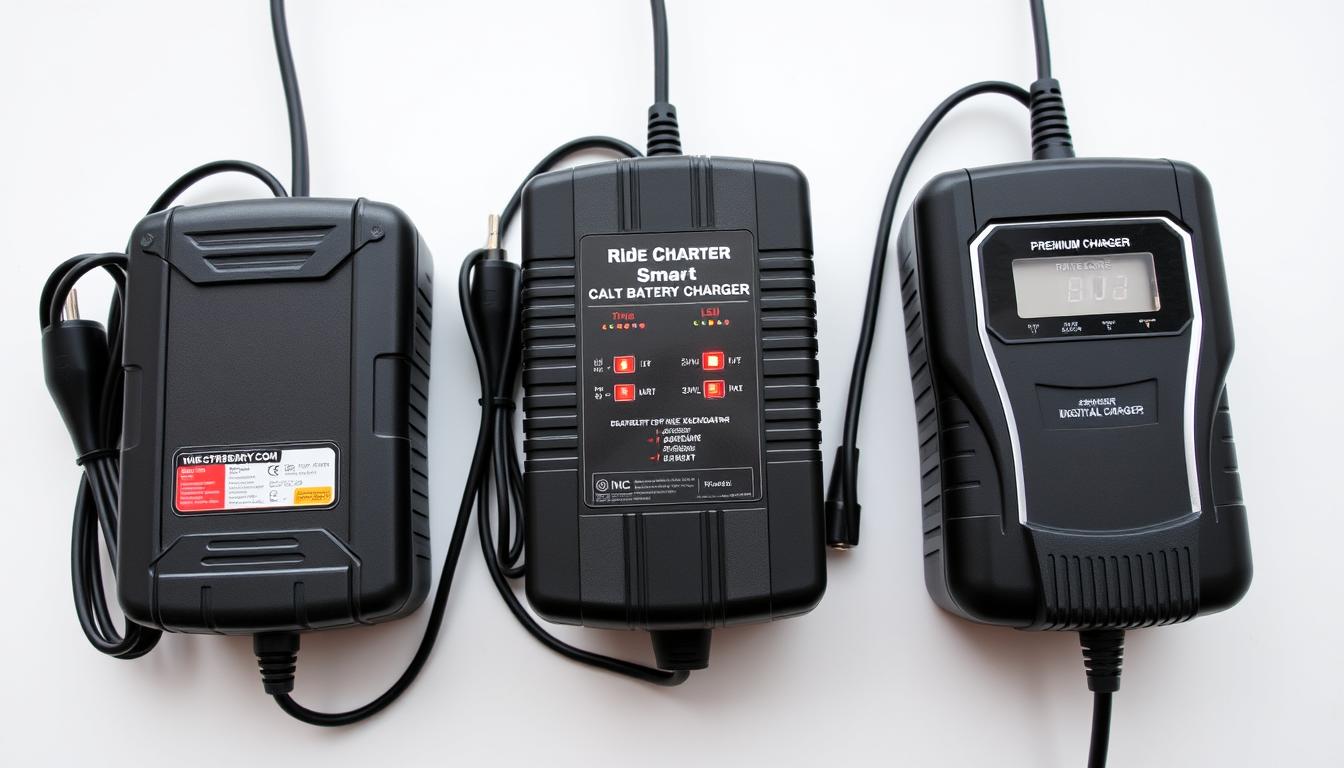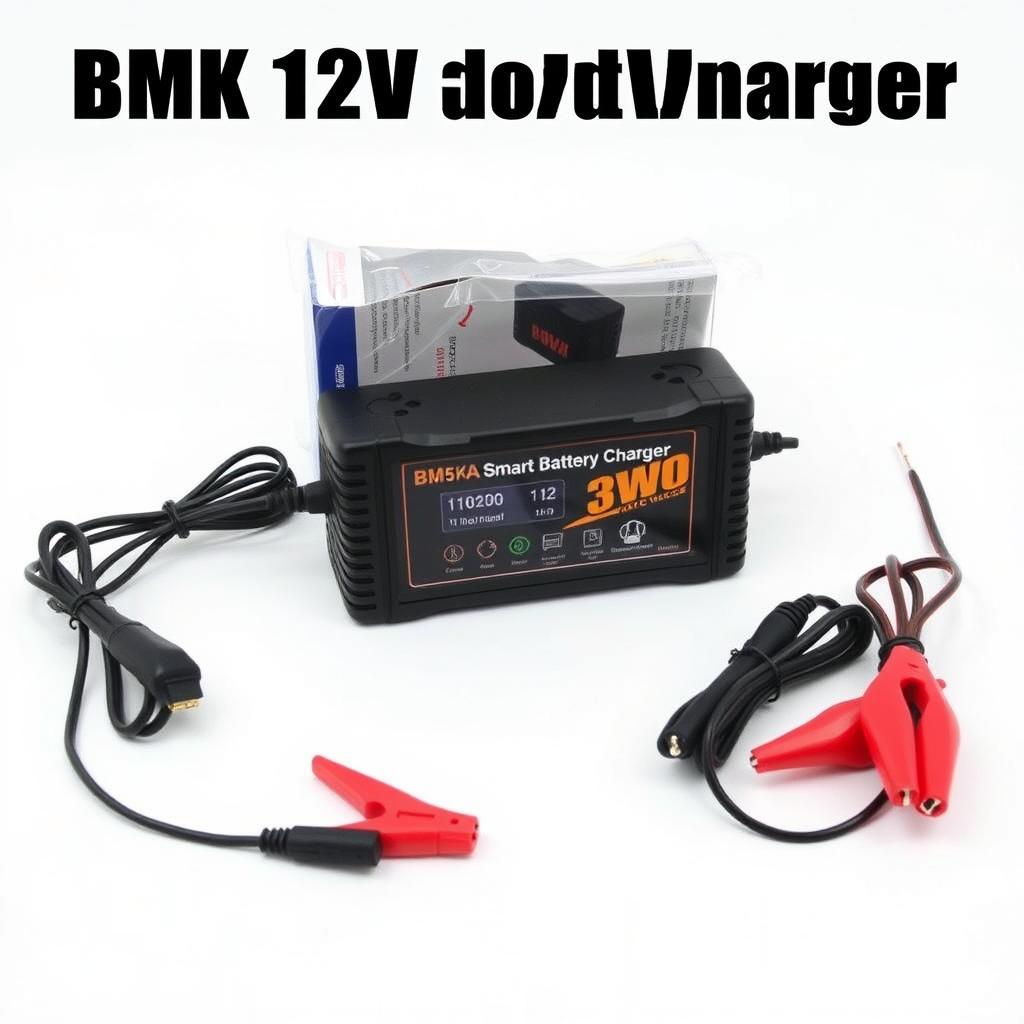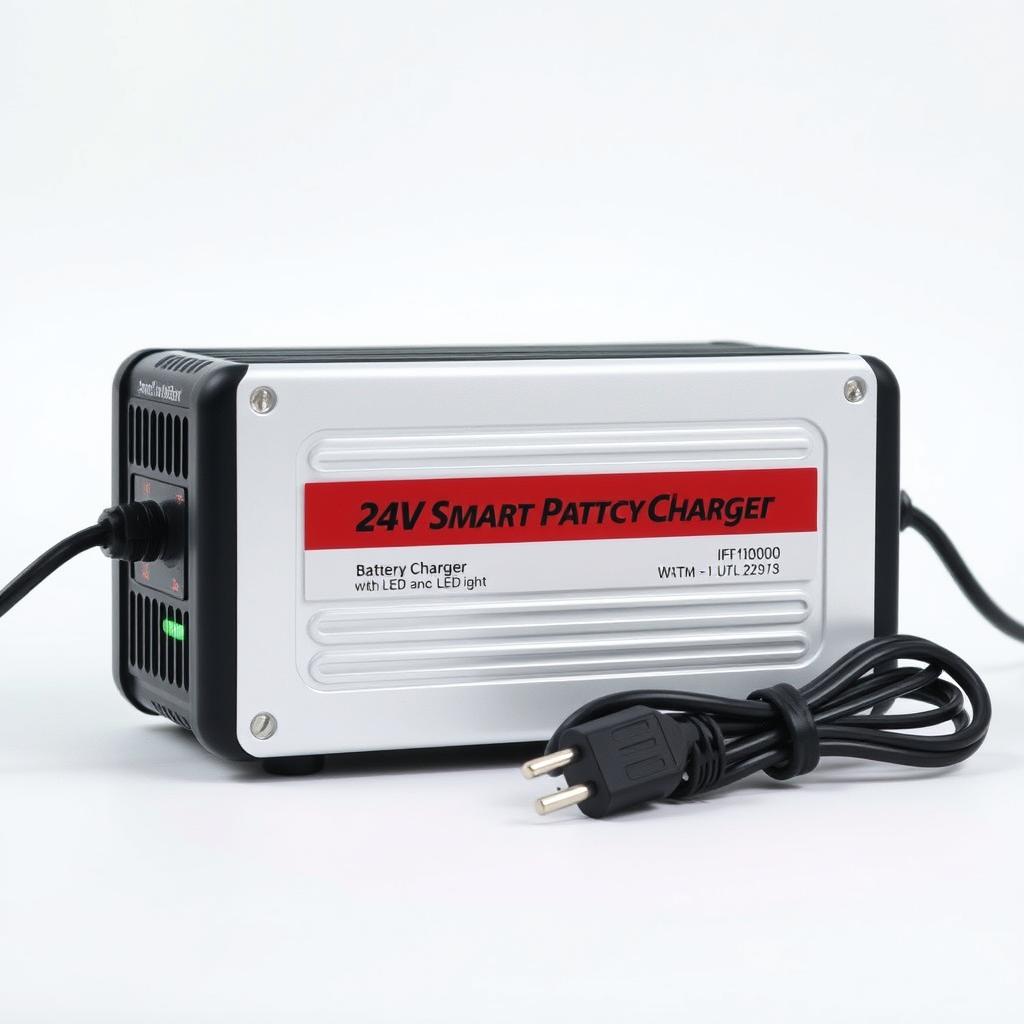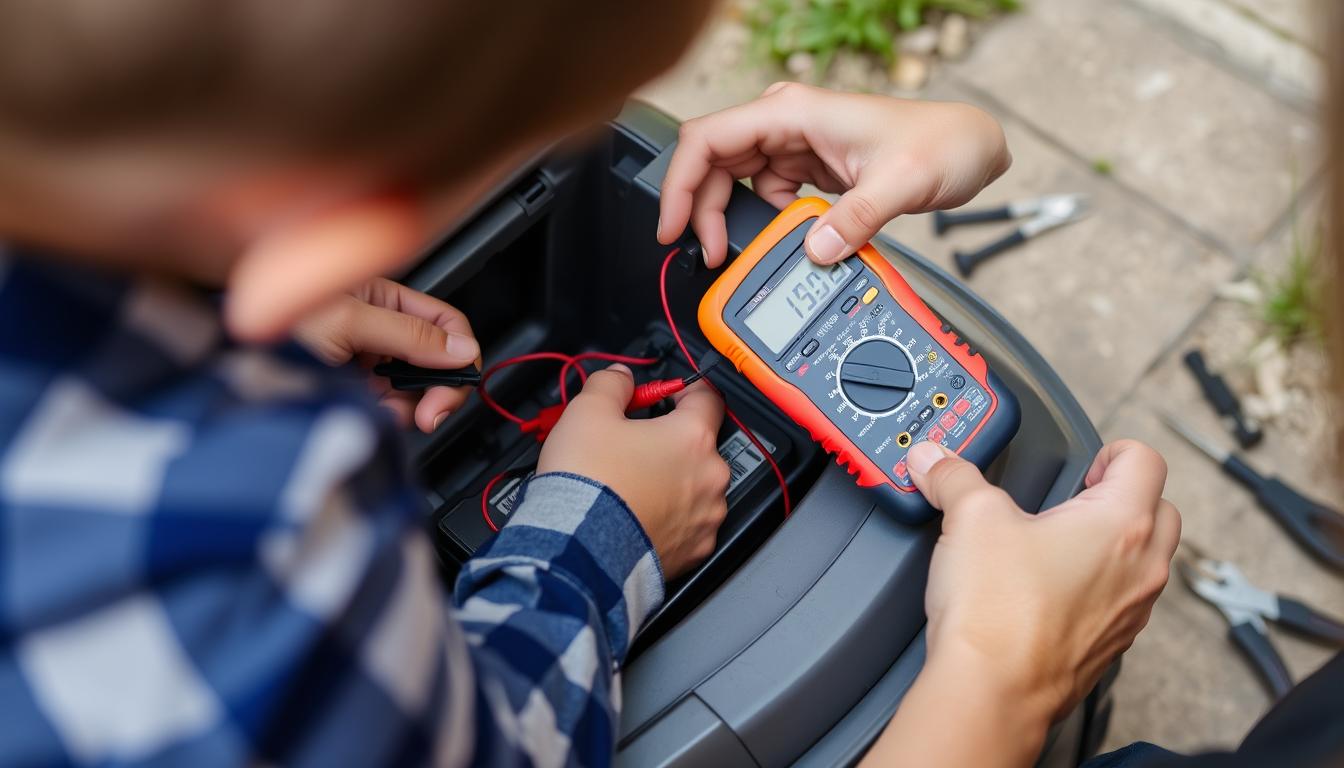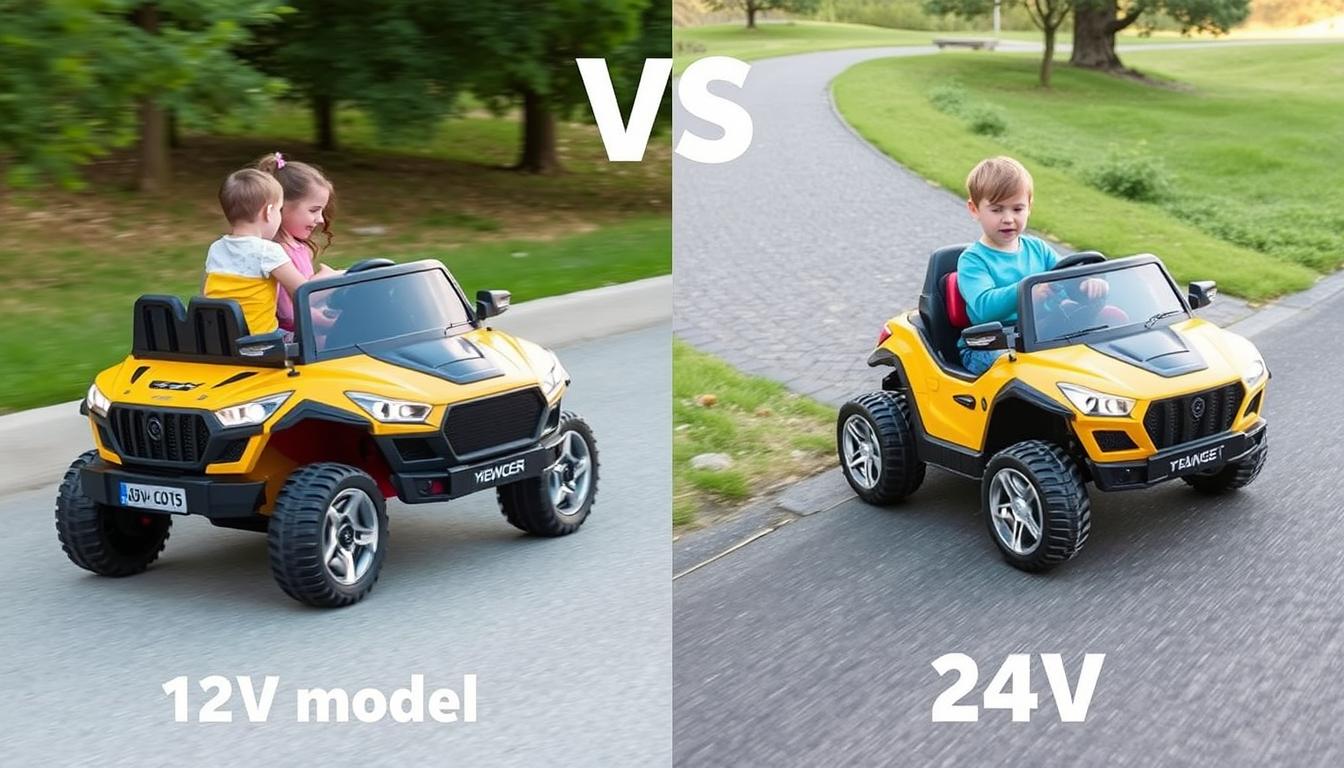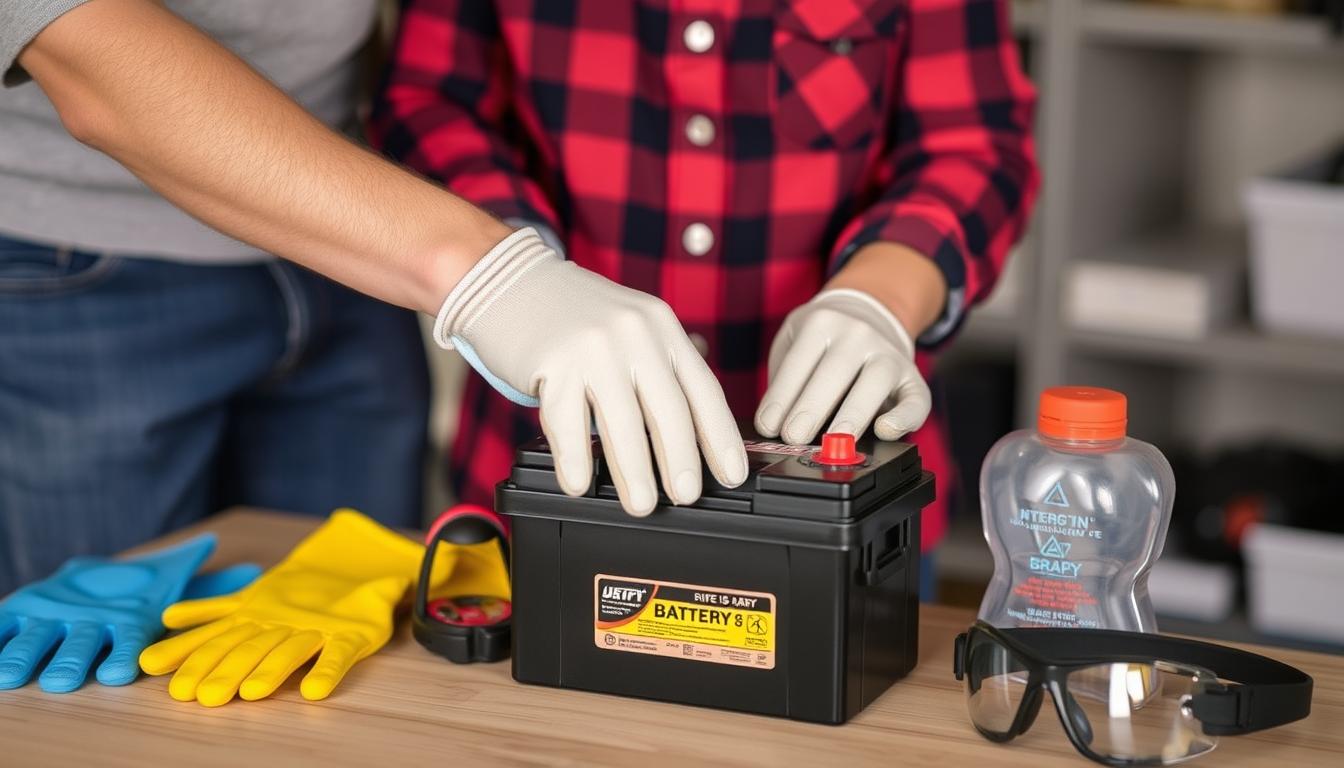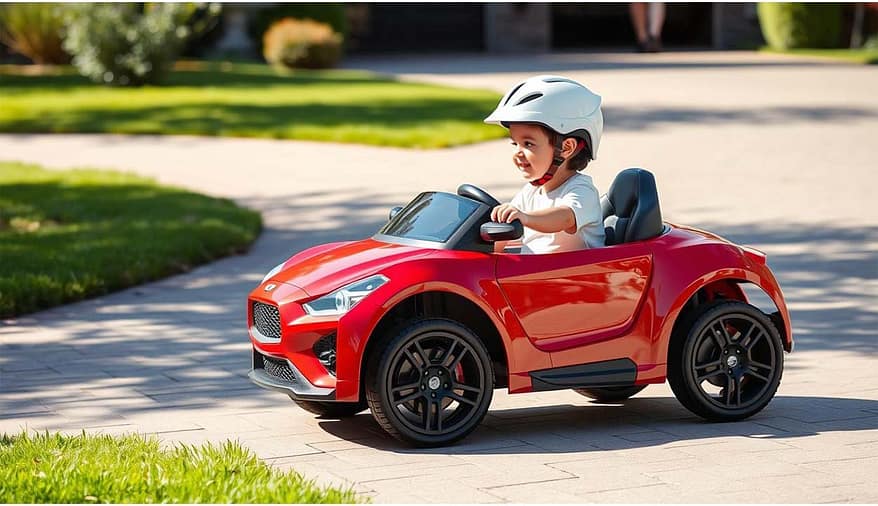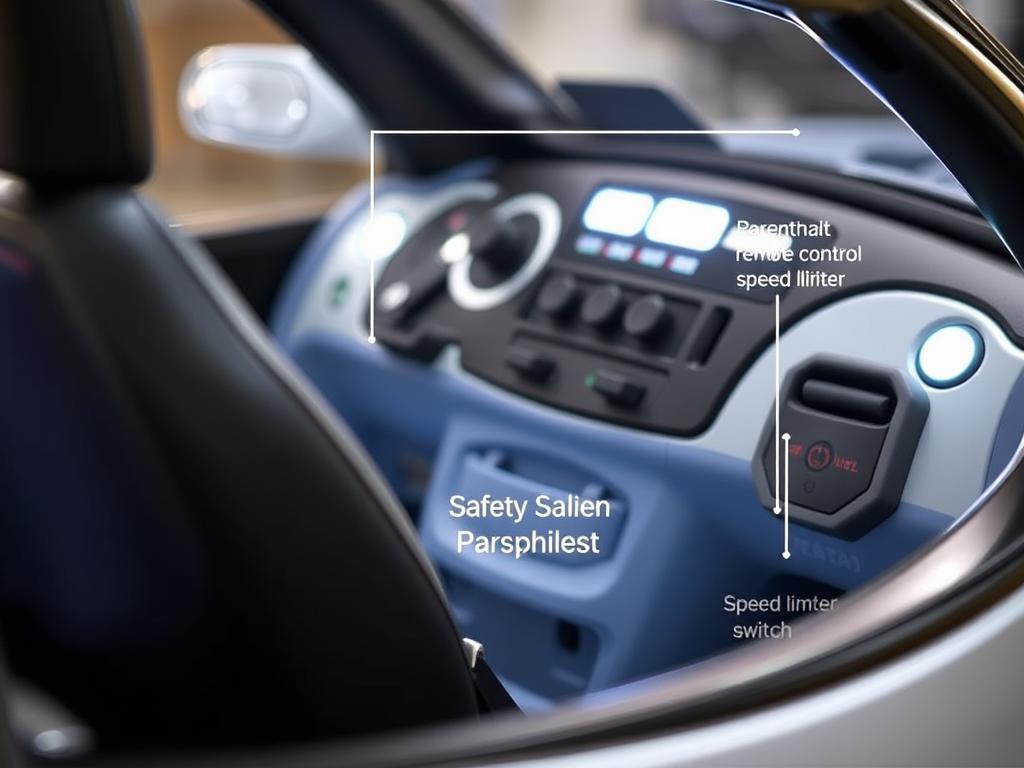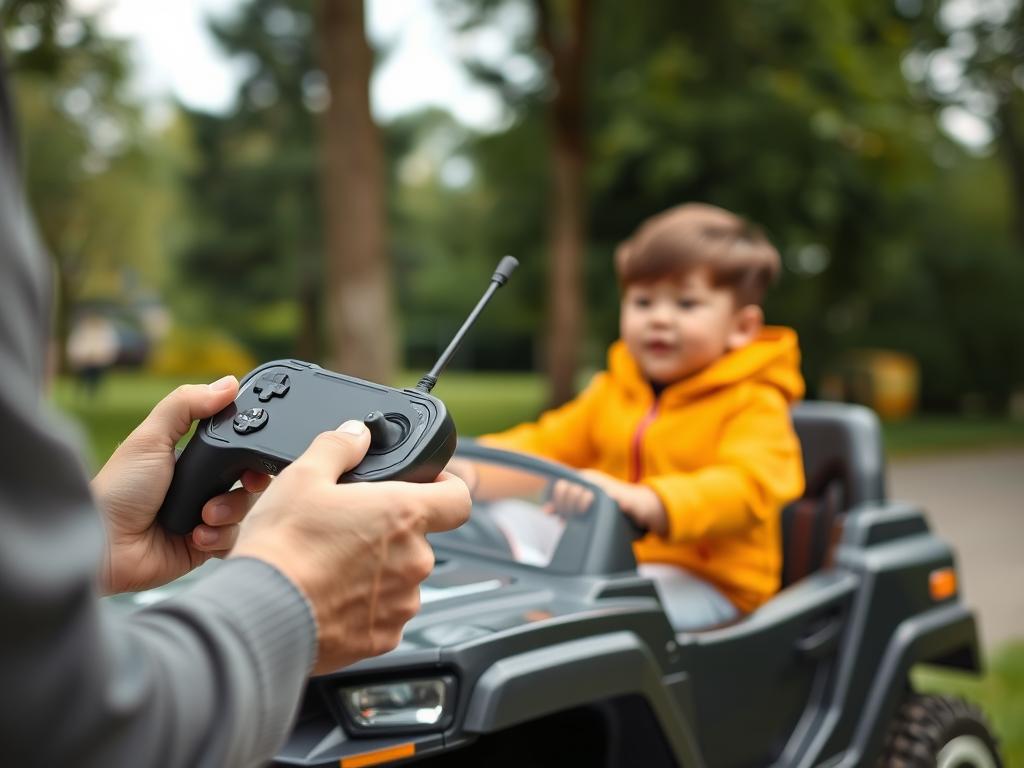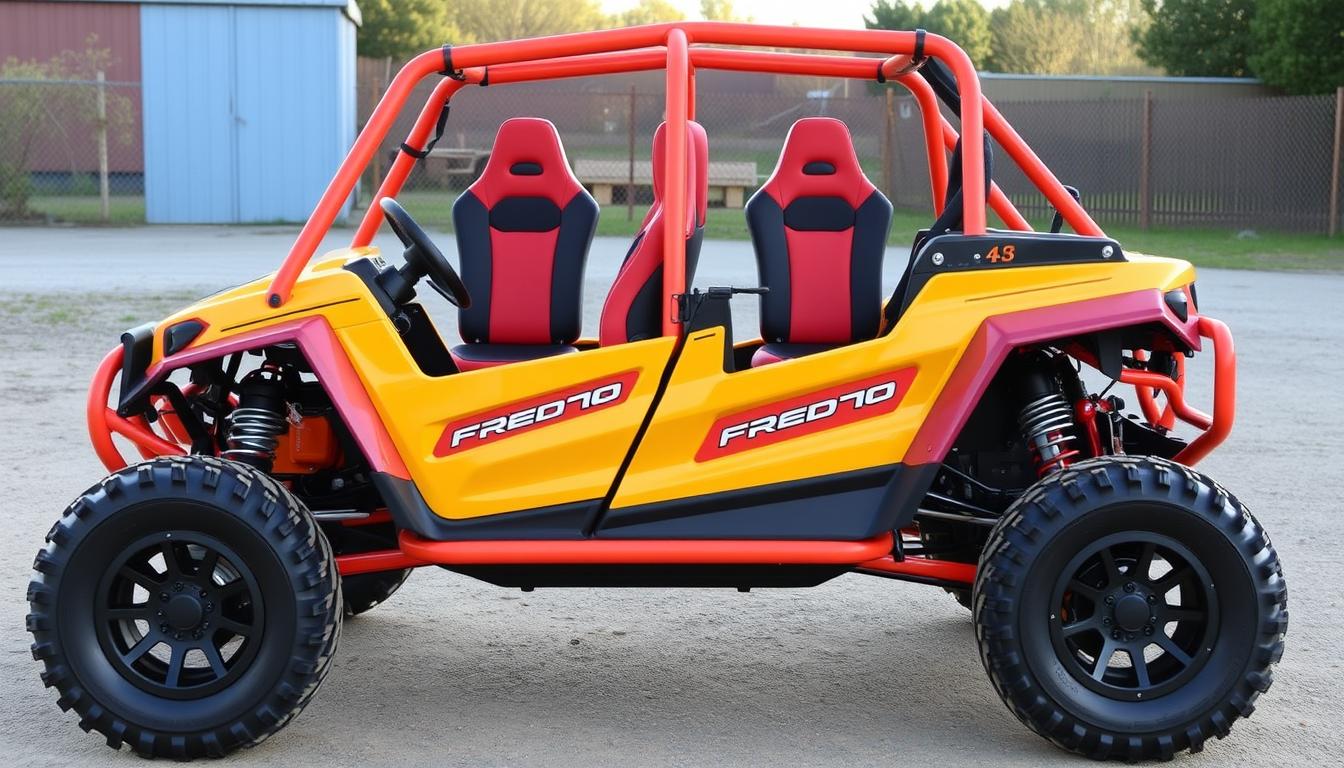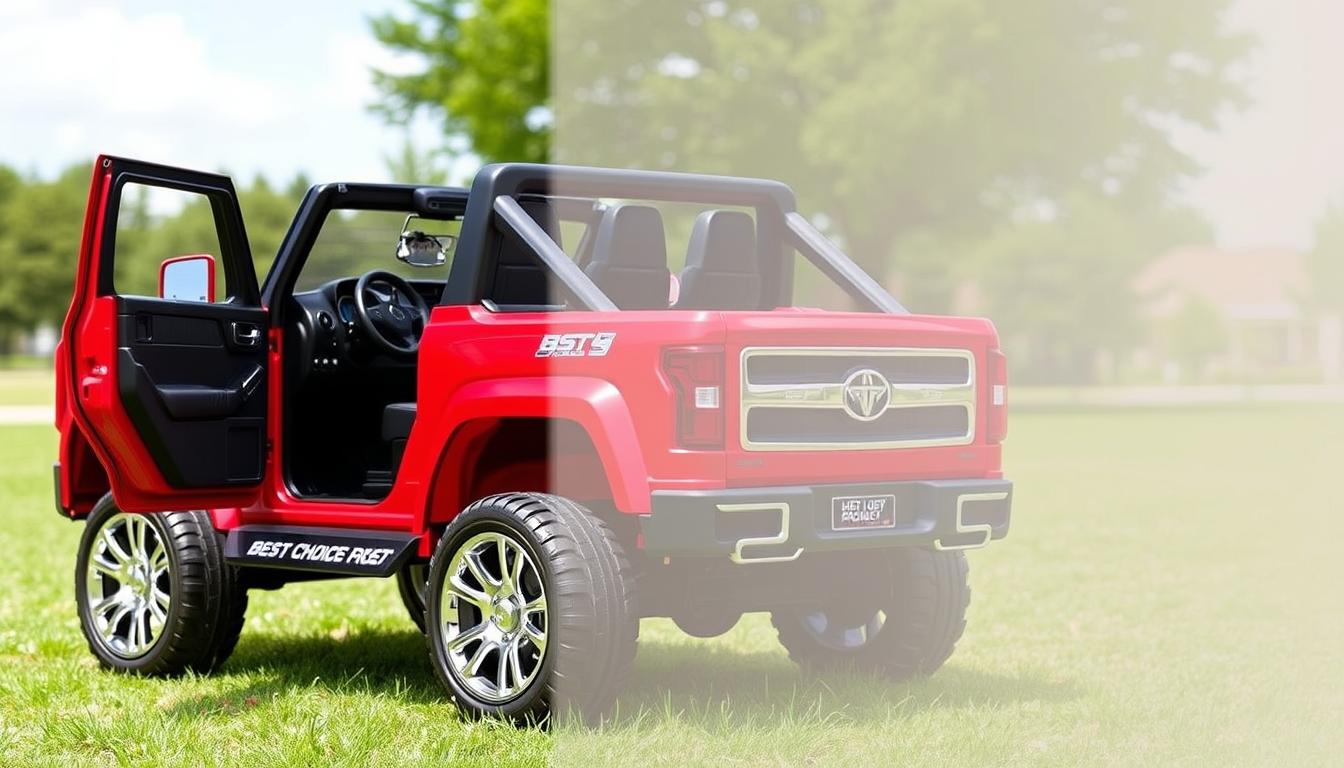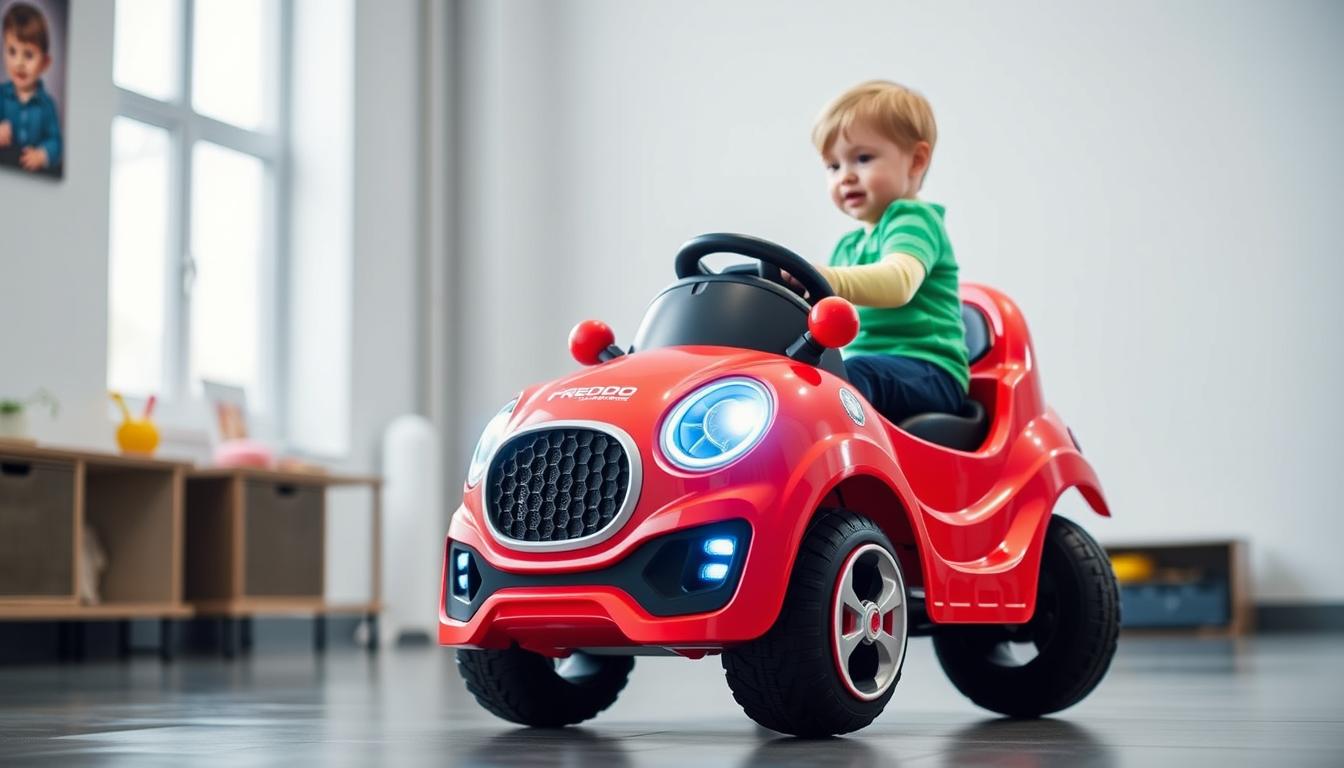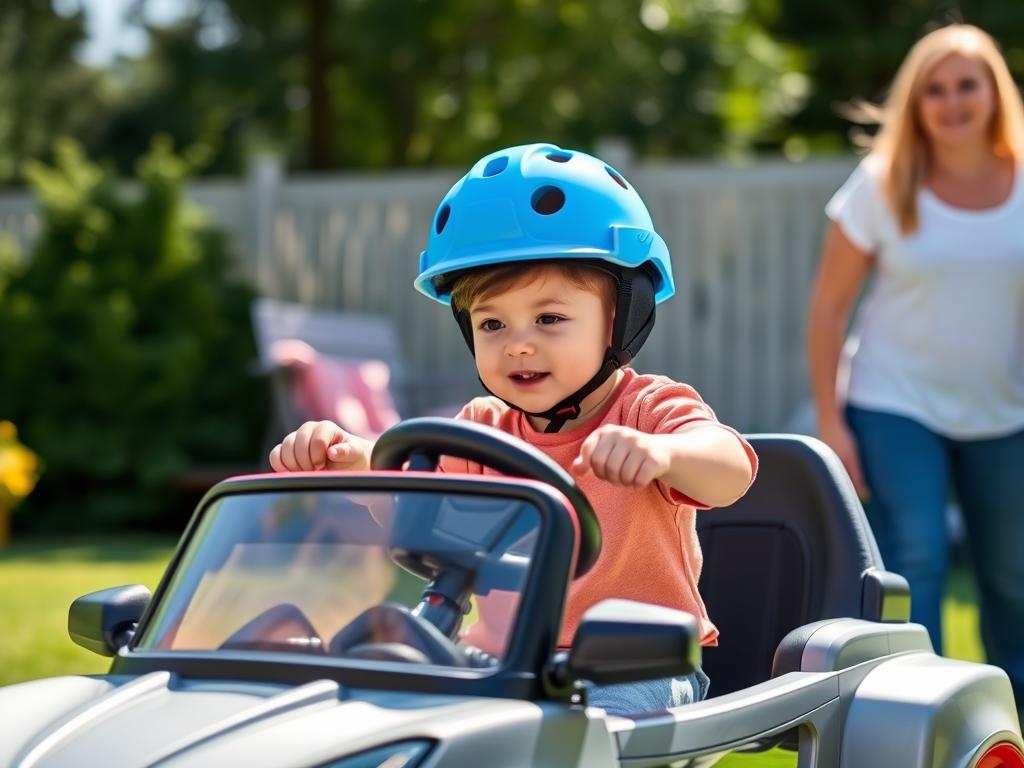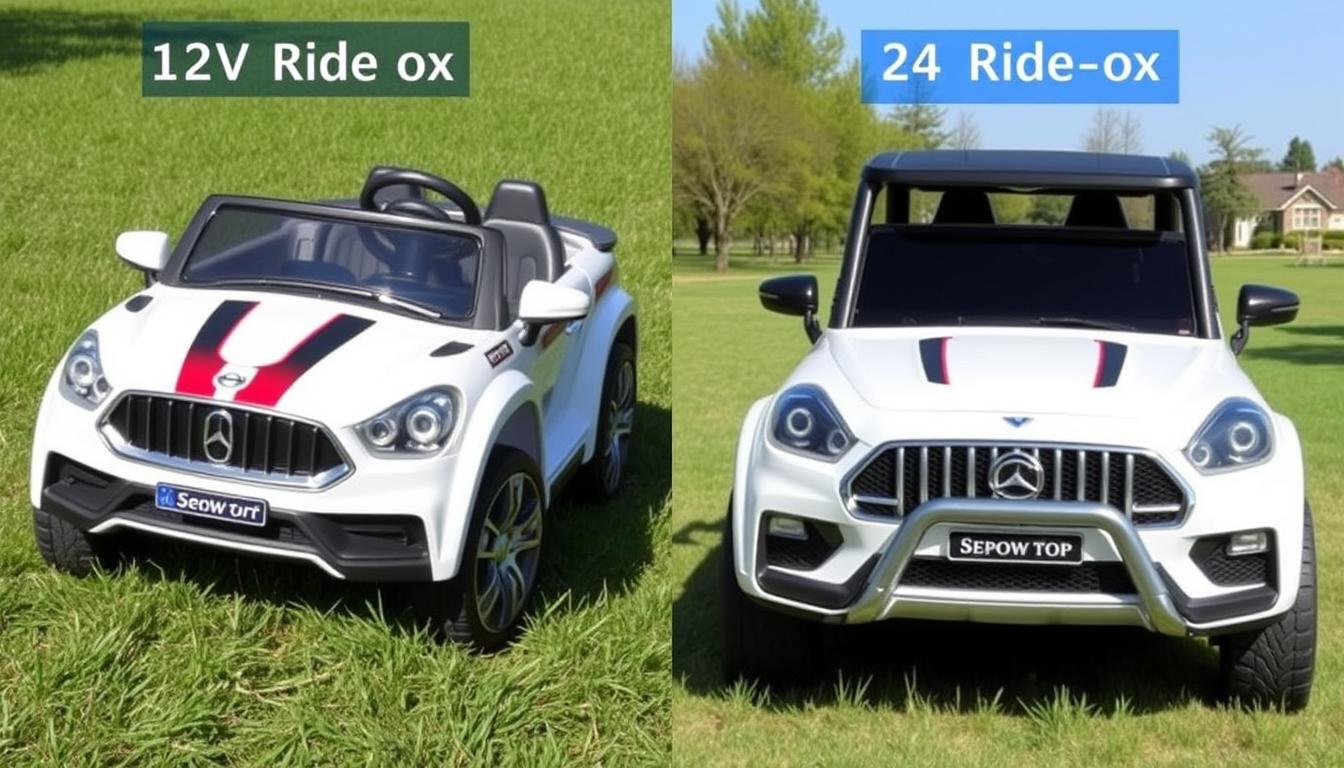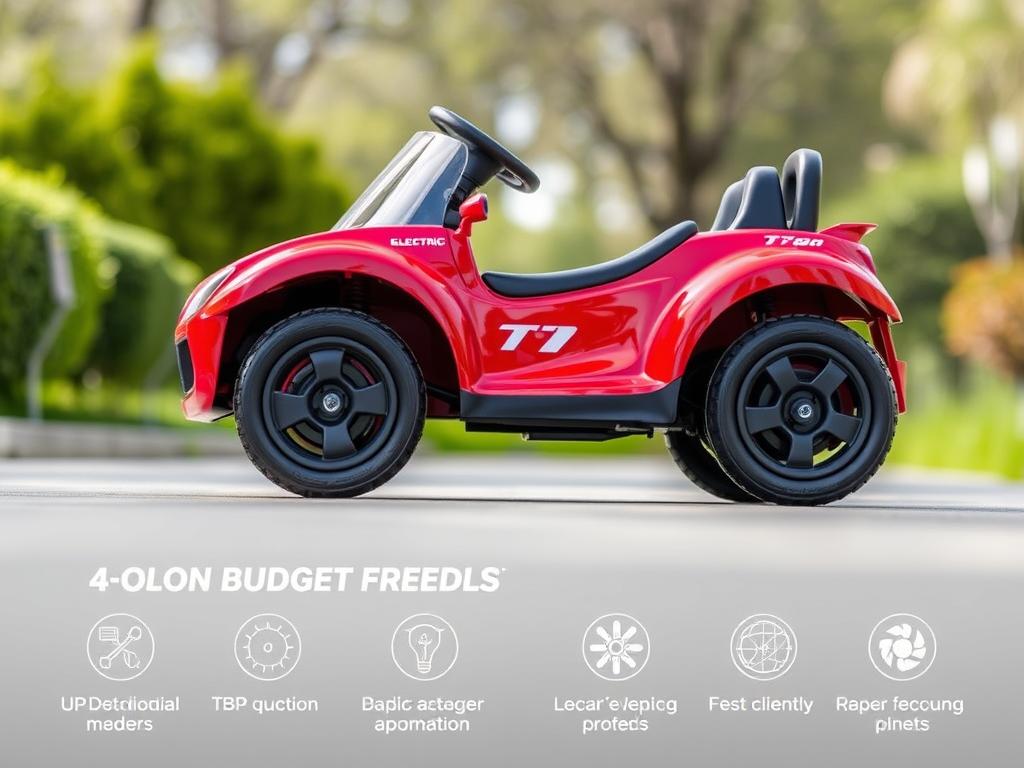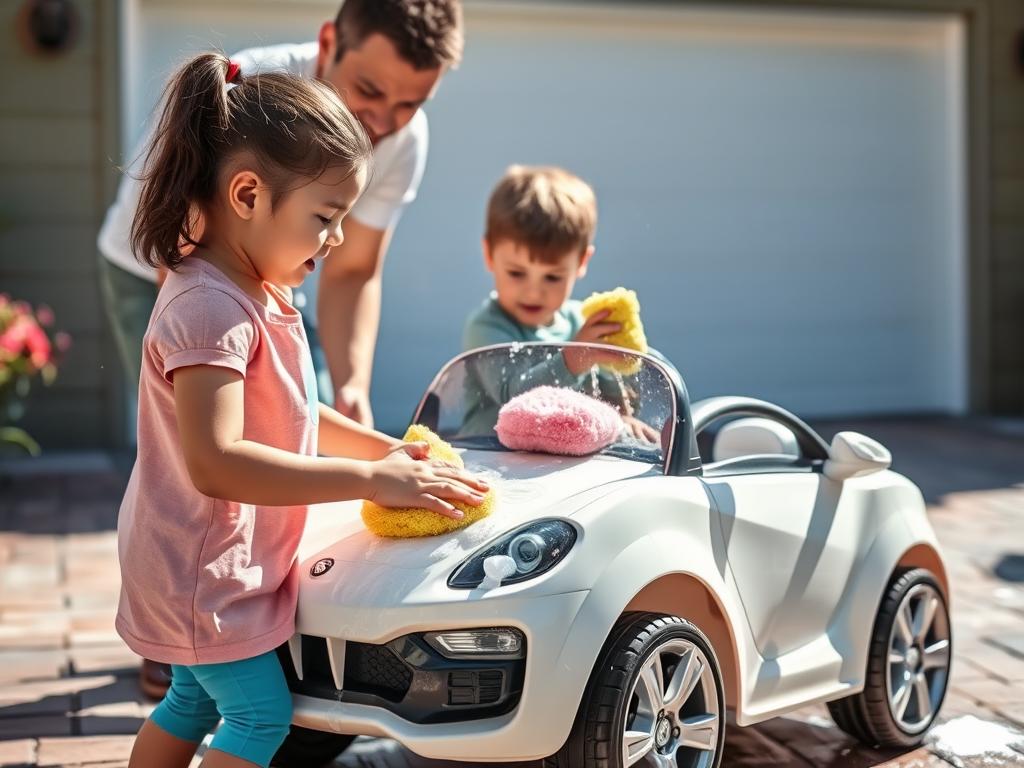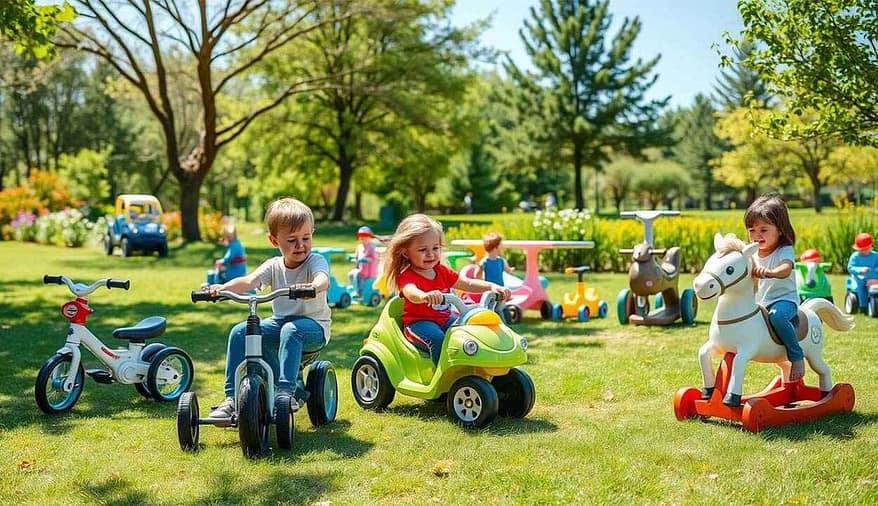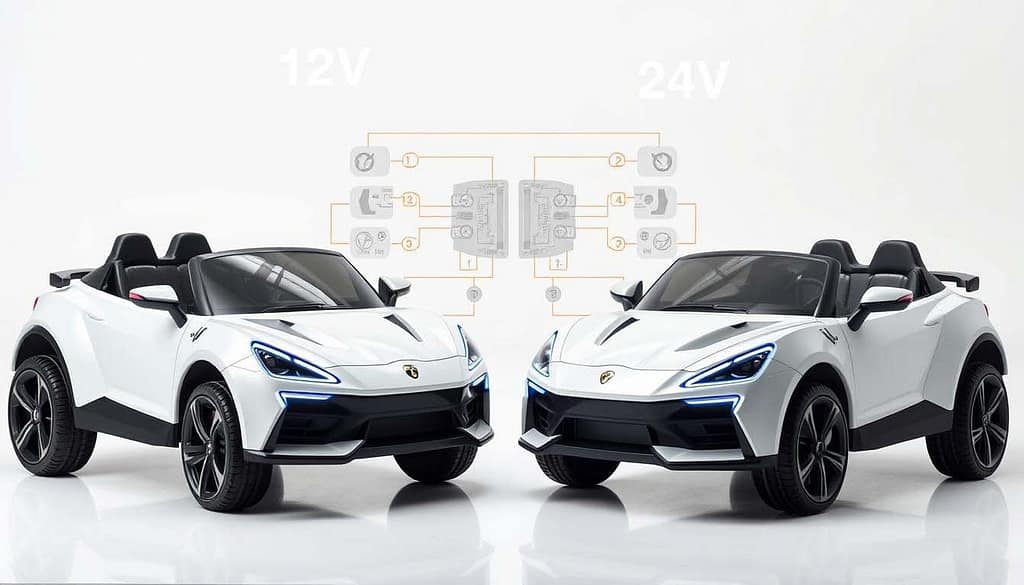
Choosing the right electric ride-on car for your child can be tough. It’s hard to decide between a battery-powered vehicle with a 12V or 24V battery.
The voltage comparison between these two is important. It affects the car’s speed, performance, and safety.
It’s important to know the differences between these kids toy cars. This helps you make a choice that fits your child’s needs.
Key Takeaways
- Understanding the voltage difference is key to picking the right ride-on car.
- A 12V ride-on car is good for younger kids, while a 24V is better for older ones.
- The voltage impacts the car’s speed and performance.
- Safety features differ between 12V and 24V models.
- Think about your child’s age and skill level when choosing the best option.
Understanding Kids Ride-On Cars
Choosing the right ride-on car for your child is important. Electric ride-on cars are fun and engaging. But, what makes them work?
What Are Electric Ride-On Cars?
Electric ride-on cars are battery-powered vehicles for kids. They offer a real driving feel. These cars have rechargeable batteries and come in many designs, like sports cars and SUVs.
They are safe and easy to use. They have parental controls and speed limiters.
Some key features of electric ride-on cars include:
- Rechargeable batteries
- Variety of designs and models
- Safety features like parental controls
How Voltage Affects Performance
The voltage of a ride-on car affects its speed and handling. Higher voltage means faster speeds and better handling. For example, 24V cars are faster and more powerful than 12V cars.
Knowing how voltage impacts performance is key. Consider your child’s age, skill, and where they’ll use the car.
The Basics of 12V vs 24V Kids Car Systems
Choosing between 12V and 24V kids’ cars means understanding voltage. Voltage is the electrical power that makes the car move. Knowing this is key to picking the right one.
What Voltage Actually Means
Voltage in electric ride-on cars shows the power to the motor. More voltage means more power and speed. Kids’ cars usually have 12V or 24V.
Power Output Differences
The power of a ride-on car depends on its voltage. Here’s what you need to know:
- 12V Cars: Good for younger kids or light use.
- 24V Cars: Better for older kids or those who want more speed.
Battery Capacity Comparison
Battery size is also important when comparing 12V and 24V systems. It determines how long the car can run.
- 12V Batteries: Usually last from 4.5 to 7 Ah.
- 24V Batteries: Often two 12V batteries together, which can last longer.
Knowing these basics helps you choose the best 12V or 24V ride-on car for your child.
Speed Comparison: How Fast Can They Go?
Choosing the right ride-on car for your child means looking at speed. The car’s voltage affects its speed. Most often, you’ll see 12V and 24V options.
Typical 12V Speed Ranges
12V ride-on cars usually go from 4 to 6 mph. This speed is good for younger kids who are starting to enjoy these cars.
Typical 24V Speed Ranges
24V ride-on cars can go much faster, from 8 to 12 mph. They’re better for older kids who want more speed and excitement.
Speed Control Features
Many ride-on cars have speed control features. These let parents set a top speed based on the child’s age and skill. Some even have remote controls for parents to take over.
- Adjustable speed limits
- Parental remote controls
- Multiple speed modes
Knowing the speed differences between 12V and 24V cars helps parents choose. They can find a balance between fun and safety for their kids.
Age Appropriateness and Weight Capacity
Choosing the right ride-on car for your child’s age and weight is key. It ensures a safe and fun experience. When picking between 12V and 24V ride-on cars, these factors are important to consider.
Ideal Ages for 12V Ride-Ons
12V ride-on cars are best for younger kids, aged 3 to 6 years. They are perfect for early childhood development. These cars are great for kids who are starting to explore.
Ideal Ages for 24V Ride-Ons
24V ride-on cars are more powerful. They are for older kids, aged 6 to 10 years. These cars offer more speed and adventure. They are perfect for older kids who can handle faster speeds.
Weight Limits and Considerations
Always check the weight capacity of the ride-on car. This ensures it’s right for your child. 12V ride-ons usually support 60-80 pounds. 24V models can handle up to 130 pounds or more.
Always follow the manufacturer’s guidelines. They provide the weight capacity and age recommendations. This ensures safety and the best performance.
Terrain Capabilities: Where Can They Drive?
When picking a ride-on car, think about the terrain it can handle. This affects how well it performs and your child’s fun. The car’s voltage and design play big roles in what surfaces it can tackle.
12V Performance on Different Surfaces
12V ride-on cars work best on smooth places like indoor floors or nice driveways. They can manage:
- Smooth concrete
- Tile floors
- Carpeted surfaces
But, they might not do well on bumpy or uneven ground.
24V Performance on Different Surfaces
24V ride-on cars have more power. They can go on various surfaces, including:
- Rough concrete
- Gravel
- Grass
- Mild inclines
They’re perfect for kids who love exploring different places, like outdoors.
Handling Inclines and Rough Terrain
For tackling tough terrains and slopes, 24V cars beat 12V ones. Features like 4WD and 4×4 help them conquer tough spots. Some benefits are:
- More grip
- Improved control on hills
- Staying steady on bumpy areas
For kids who love bold rides, a 24V car with 4WD or 4×4 is a great pick.
Battery Life and Charging Considerations

The length of time a ride-on car for kids can run is key to fun. Choosing between 12V and 24V models greatly impacts playtime without needing a recharge.
12V Battery Runtime
12V ride-on cars usually run for 1 to 2 hours on one charge. This depends on the terrain, weight, and how it’s used. For example, driving on flat surfaces with less weight can help it last longer.
24V Battery Runtime
On the other hand, 24V models can run for 2 to 4 hours. They use power more efficiently, even on slight inclines or with more weight.
Charging Times and Battery Maintenance
Charging times for both 12V and 24V batteries are similar, taking 8 to 12 hours for a full charge. Keeping the battery in good shape is important. This means avoiding overcharging, cleaning the terminals, and storing it right when not in use.
| Battery Type | Runtime | Charging Time |
|---|---|---|
| 12V | 1-2 hours | 8-12 hours |
| 24V | 2-4 hours | 8-12 hours |
Knowing these details helps parents choose the right ride-on car for their kids. It ensures a good balance between playtime and charging needs.
Safety Features in Electric Ride-On Cars
Safety is key in electric ride-on cars. Manufacturers have added many features to keep kids safe. These features help prevent accidents and give parents peace of mind.
Standard Safety Features
Most electric ride-on cars have seat belts, stable designs, and anti-collision systems. These help prevent injuries and accidents.
- Seat belts to secure the child
- Stable and wide bases for better balance
- Soft edges to minimize injury from impacts
Remote Control Options
Many electric ride-on cars have remote control options. This lets parents take control if needed. It’s great for younger kids who may not know how to drive.
Remote controls help prevent accidents. They let parents guide the vehicle to safety.
Speed Limiters and Parental Controls
Speed limiters and parental controls are also important. They let parents set speed limits. This is good for younger or less experienced drivers.
- Adjustable speed settings
- Parental control via remote or app
- Automatic shut-off in case of an emergency
Price Comparison Between 12V and 24V Models
Choosing a ride-on car for your child means looking at the price difference between 12V and 24V models. The cost varies based on brand, features, and voltage.
Average Cost Ranges
12V ride-on cars usually cost between $100 and $300. This depends on the model and its features. In contrast, 24V models are more expensive, ranging from $200 to $500 or more for top models.
| Voltage | Average Cost Range |
|---|---|
| 12V | $100 – $300 |
| 24V | $200 – $500+ |
Value for Money Considerations
When looking at value, consider more than just the price. Think about durability, battery life, and extra features. 24V models often have better performance and longer battery life. This might make them worth the extra cost for some families.
Popular 12V Ride-On Models and Features
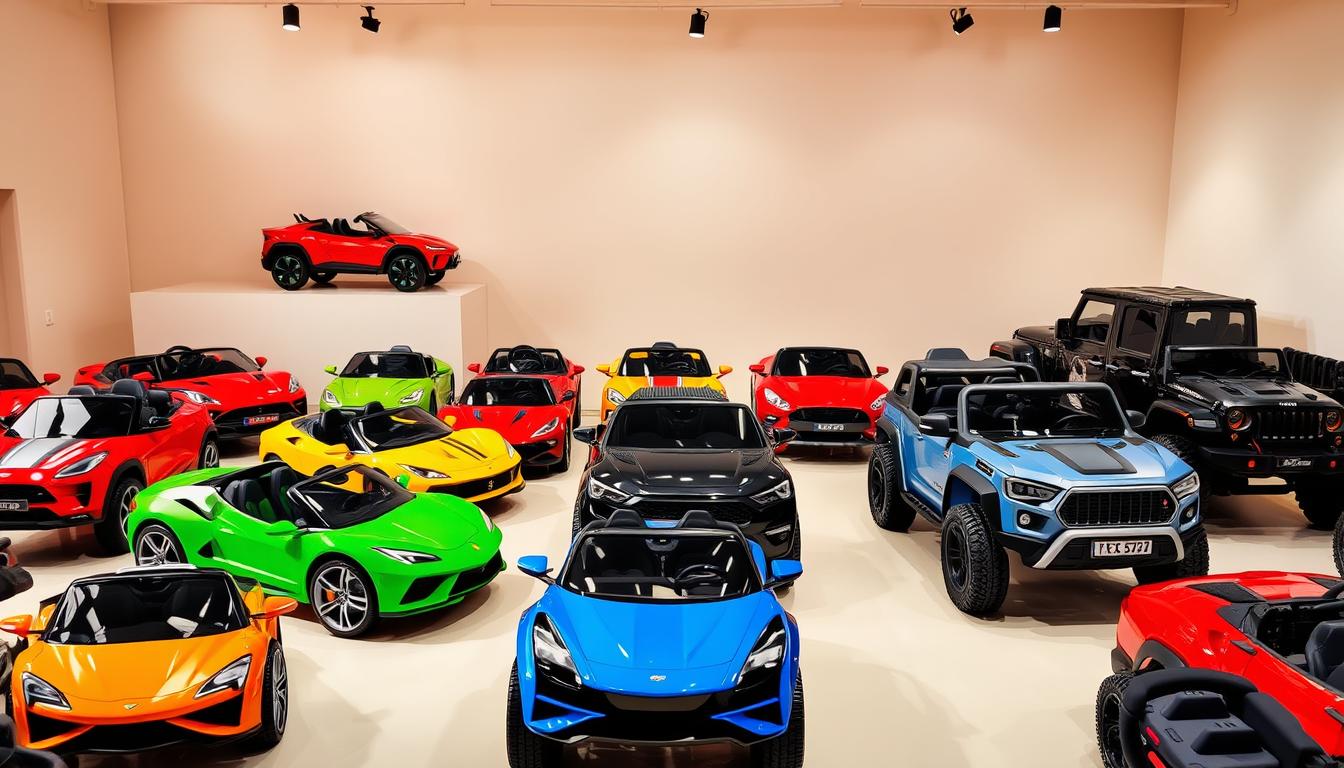
Parents have many 12V ride-on cars to choose from. Each model has its own special features. They are designed to be fun and safe for kids.
Best-Selling 12V Cars
Top 12V ride-on cars come from well-known brands. They mix style, safety, and fun. Kids and parents love them for their reliability and cool features.
Key Features of Best-Selling Models:
- Realistic designs that mimic actual cars
- Parental remote control for added safety
- Multiple speed settings
- LED lights and horn for a more realistic experience
Single-Seater Options
Single-seater 12V cars are great for young kids. They are smaller and easier to handle.
Two-Seater Options
Two-seater 12V cars are perfect for siblings or friends. They have cool features like shared or independent controls.
| Model | Seating Capacity | Max Speed | Remote Control |
|---|---|---|---|
| Model A | Single | 5 mph | Yes |
| Model B | Double | 6 mph | Yes |
| Model C | Single | 4 mph | No |
Popular 24V Ride-On Models and Features
For kids looking for more power, 24V ride-on cars are a great pick. They are faster and more powerful than 12V cars. This makes them perfect for older kids or those who love excitement.
Best-Selling 24V Cars
The best-selling 24V ride-on cars come from top brands. They mix style, speed, and safety. These cars have advanced parental controls to keep kids safe while they ride.
Single-Seater Options
There are many single-seater 24V ride-on options for kids who like to ride alone. These cars are made for one rider. They are fast and have cool designs.
Two-Seater Options
Two-seater 24V ride-on models are great for kids who like to ride with friends. They are perfect for siblings or friends who want to share the fun.
When picking a 24V ride-on car, think about battery life, how it handles different terrains, and safety. The right choice will make the ride more fun and exciting for kids.
Upgrading from 12V to 24V: Is It Worth It?
Parents often think about upgrading their child’s ride-on car from 12V to 24V. This choice depends on several things. These include the child’s age, driving skills, and where they usually drive.
Modification Possibilities
Changing a 12V ride-on car to 24V is possible in some models. But, it’s not easy. You need to replace the motor, battery, and maybe other parts. It’s important to check if the car can be upgraded.
Some makers offer upgrade kits or guides. But, making these changes might void the warranty. It could also affect safety features. For example, a leading maker says,
“Upgrading your ride-on car’s voltage can make it better but do it carefully and follow our rules.”
When to Consider an Upgrade
Think about upgrading to 24V if your child wants more speed or has trouble on hills. The table below helps you decide:
| Factor | 12V | 24V |
|---|---|---|
| Speed | Slower, good for younger kids | Faster, better for older kids |
| Terrain Capability | Limited, struggles on hills | Does better on different terrains |
Cost vs. Benefit Analysis
When deciding between upgrading or buying a new 24V car, think about the cost and benefits.
In summary, upgrading from 12V to 24V might be good for some families. But, it’s important to think about the pros and cons. By considering these, parents can choose what’s best for their child.
Conclusion: Making the Right Choice for Your Child
Choosing the right ride-on car for your child can be tough. It’s hard to decide between a 12V and a 24V kids car. Think about your child’s age, weight, and your budget to make a good choice.
The decision depends on what your child needs and likes. If they’re young or like to go slow, a 12V ride-on car might be best. But if they’re older and want to go faster, a 24V kids car is better.
It’s important to think about both options carefully. This way, you’ll pick a ride-on car that your child will love. It should be safe and fun for them.
FAQ
What is the main difference between 12V and 24V kids cars?
The main difference is in power and speed. 24V cars are faster and more powerful than 12V ones.
Are 24V ride-on cars suitable for younger children?
No, 24V cars are best for older kids because they are fast. 12V cars are safer for younger ones.
How does voltage affect the performance of electric ride-on cars?
Higher voltage means more power and speed. This makes 24V cars better for tough terrain and bigger kids.
What are the typical speed ranges for 12V and 24V ride-on cars?
12V cars go from 2 to 5 mph. 24V cars can go up to 6-8 mph or more, depending on the model and where you ride.
Can I upgrade my child’s 12V ride-on car to a 24V system?
Upgrading is possible but complex. It might not be safe or work well, so it’s not always recommended.
How long do 12V and 24V ride-on car batteries last on a single charge?
Battery life varies by model and how it’s used. 12V batteries last 1-2 hours. 24V batteries can last 2-4 hours or more.
Are there safety features available for electric ride-on cars?
Yes, many have safety features. These include speed limits, parental controls, and remote controls for a safe ride.
What is the average cost range for 12V and 24V ride-on cars?
Prices vary by features and brand. 12V cars cost $100 to $300. 24V cars cost $200 to $500 or more.
Can 24V ride-on cars handle rough terrain and inclines?
Yes, 24V cars are better for tough terrain and hills. They have more power and torque than 12V models.
Are there two-seater ride-on car options available for both 12V and 24V models?
Yes, both 12V and 24V cars come in two-seater models. They’re fun for two kids to ride together.

 Cart is empty
Cart is empty 
